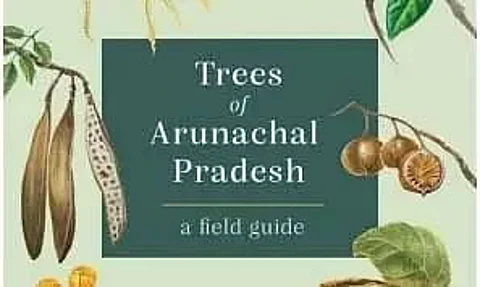
- Home
- Live Blog
- Breaking News
- Top Headlines
- Cities
- NE News
- Sentinel Media
- Sports
- Education
- Jobs

NEW DELHI: With over 1,500 photos of 241 species, biologists from the Nature Conservation Foundation (NCF) and the Wildlife Institute of India (WII) have published the first-ever pictorial field guide -- 'Trees of Arunachal Pradesh: A field Guide', a region famed for its biological diversity.
Authored by three seasoned field biologists - Dr Navendu Page (WII), Dr Aparajita Datta and Bibidishananda Basu (both from the NCF), the book builds on their collective experience of over two decades of field botany and forest ecology of North-East India to present an authoritative guide to the trees.
Visually rich, this book will help a commoner to efficiently and easily identify trees of this region.
Terming it as an absolute delight not only for biologists but also for anyone remotely interested in exploring plant life in the land of the rising sun, director of the Bombay Natural History Society (BNHS) Dr Bivash Pandav, said: "Moving forward from the conventional plant taxonomy literature, this book is a breath of fresh air and will surely generate huge interest among the readers to understand the plant diversity of Arunachal Pradesh.
"Elegant illustrations and appropriate descriptions along with actual photographs of the flora, make this field guide easy to use for both professionals as well as nature enthusiasts. This field guide is an outcome of years of hard work put in by the authors and demonstrates their thorough understanding of the region. A must-have while planning for a trip to India's North-East," Pandav said.
The book features more than 1,500 photos of 241 species of trees, shrubs and a few climbers.
'Keys' based on easily observable characters such as leaves, flowers, and fruits, help the reader navigate through the pages and to identify each species. One of authors said, "These provide pointers to compare similar-looking species, helping get past the lookalikes and identify the plant of interest quickly and accurately."
The species pages, which form the bulk of the book, give an account of the species' ecology and utility, with images of the plant parts.
Another author, Datta, said: "We have given the flowering and fruiting times, who eats the fruits or how seeds are dispersed from our field observations or literature."
The user-friendly and aesthetic features of this book, available online, make it an attractive resource for botany students, naturalists, plant explorers, tree watchers, teachers, researchers, forest department staff, and the people of Arunachal Pradesh, a statement by the authors said. (IANS)
Also Watch: